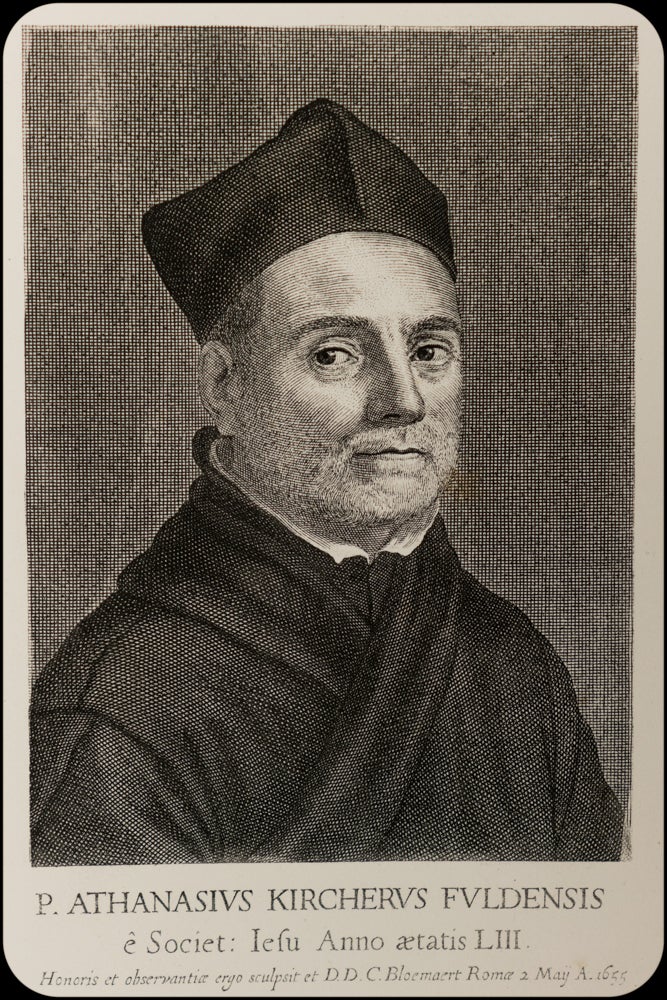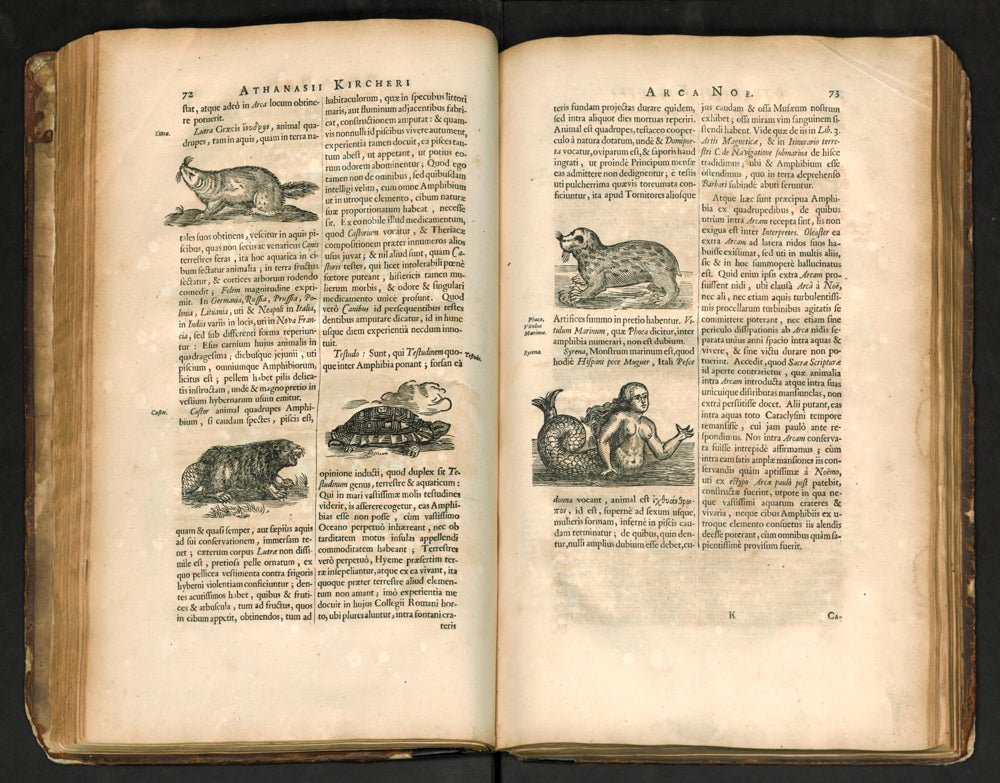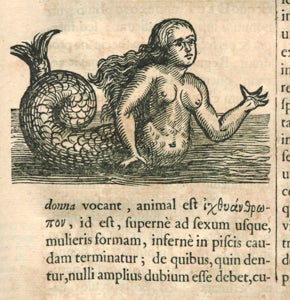Athanasius Kircher (1602-1680) was a Jesuit whose prolific writings covered the origins of language (e.g., Turris Babel), Egyptology (e.g., Lingua aegyptiaca restituta), Chinese language and culture (e.g., China monumentis qua sacris qua profanis), and topics in the natural sciences ranging from volcanos to zoology. One such opus of Kircher’s was the Arca Noë- a scientific examination of the biblical story of Noah’s ark and an encyclopedic description of the animals gathered inside.
The biblical narrative of Noah, found in Genesis 6-9, describes a deluge sent by God to destroy a fallen and corrupt humanity, but also contains a message of hope. That hope is hinged on the Ark that Noah built at God's command so that all of the animals, including humans, could be preserved and inhabit a new world. Since the biblical narrative does not specifically identify animals other than “clean” and “unclean” beasts, fowls, and those creatures which crawl on the ground, it opens a space where imagination, mixed with scientific study, can reconstruct which animals were in the ark and the dimensions needed to accomodate such a cargo. Kircher explores both of these aspects in his Arca Noë, where he not only lists and describes all of the animals on the ark, but goes to great lengths to explain and illustrate the design and construction of the ark.
Kircher’s description of animals includes not only those we can identify today, such as the rhinoceros or turtle, but also includes fantastic beasts such as the unicorn and the mermaid. Here is his passage about mermaids along with the illustration from Woodstock Theological Library’s copy of Arca Noë:
“The siren is a sea monster, and today the Spaniards call pece muguer [fish woman], Italians call pesce donna [fish woman], it is a ιχθυανθρωπον [ixthuanthrōpon =fishhuman] animal that, at top all the way down to the private parts is the form of a female, at the bottom it ends in the tail of a fish. About this, without providing [more proofs] no one should have further doubts, whose tail and bones, our museum exhibits. The bones have great power to stop bleeding. See what about these we have presented in book 3 of Artis Magneticae and Itinerario terrestri C. de Navigation, where we have also shown it to be amphibius. The Barbarians are said to abuse them once they catch them on land.”*
-Entry by Amy E. Phillips
*translation by Amy E. Phillips and Marek Dospěl



